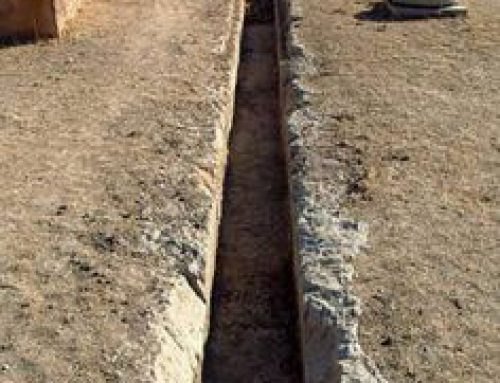
The constellation Orion
What did Mesopotamians invent?
From the Stone Age through the Islamic empires, great scientific discoveries have streamed out of West Asia. West Asia is one of the places where farming got started, and maybe the sailboat.
Farming
Early ships and sailing
Numbers and writing
The pottery wheel
All our West Asia articles
The Sumerians developed the world’s earliest system of writing, including the first way to write down numbers. They invented the wheel, using it as a pottery wheel to make pottery faster.
Mesopotamian astronomy

Clay on a potter’s wheel
Sumerian astronomers also named the planets after their gods: Marduk (Jupiter), Ishtar (Venus), Ninurta (Saturn), Nabu (Mercury), and Nergal (Mars). They first observed the way the planets moved, and were able to predict what the planets would do next. They used this information to invent the signs of the zodiac and cast horoscopes.
History of astronomy
More about planets
Today we know that the future can’t really be predicted by horoscopes, or by the signs of the zodiac. But what the Sumerians learned about the movement of the planets is still important to astronomers today.
Hours and minutes: telling time
Furthermore, the Sumerians developed the way we tell time. In Sumer, people thought there was something special about the number 12 (because that was the number of phases of the moon in one year), and about the number 60 (because it was 5 times 12).
What is time?
Sundials and clocks
Making a sundial
So they divided the day up into two sets of twelve hours, 24 hours. They divided each hour into 60 minutes, and each minute into 60 seconds. We still use these divisions today.

Hittite iron bracelets and pins from what is now Turkey, about 1200-1100 BC
Bronze and iron
The Sumerians also pioneered the use of bronze. Bronze is a mixture of tin and copper that was the first metal people used for tools.
What is bronze?
What is iron?
Inventing the bellows
Chemistry of metal
A thousand years later, also in West Asia, the Hittites invented a better bellows and became the first to make tools out of iron.

Glass “eye bead” imported to China (ca. 100 BC)
Charcoal filters and glass
The Phoenicians may have been the first people to burn the inside of their wooden water barrels into charcoal.
What is charcoal?
Invention of glass
The charcoal layer acted as a water filter and kept water cleaner on board ships for long trips. And the Phoenicians and Syrians invented glass. (Unless glass was actually invented in Egypt; nobody knows for sure.) They sold glass beads and glass bottles to all their neighbors.
Inventing the screw pump
Around 700 BC, the Assyrians may have invented the screw pump (often called Archimedes’ screw). It lifts water from one level up to another level and is very useful for irrigation.
What is a screw?
Simple machines
Assyrian kings may have used the screw pump to water the plants of the Hanging Gardens of Babylon. That was one of the wonders of the ancient world.

Using a screw pump for irrigation
The first good roads
The Persians, around 500 BC, were the first to build a long straight road 1000 miles long across their empire, the King’s Road.
When Alexander the Great conquered West Asia in 331 BC, it came under Greek rule, and during this Hellenistic period many West Asian cities had famous schools and came up with a lot of new scientific ideas.
Hellenistic inventions
Parchment (sheep skins) was developed as a writing surface, and many of the first serious research libraries were developed. In Pontus, near the Black Sea,
Parchment
Glass-blowing
More astronomy
Heraclides showed that the earth turned on its axis, and that Mercury and Venus went around the sun. The Phoenicians also developed glass-blowing about this time.

Roman mold-blown glass (100s AD)
Parthian and Sassanian science
Under Parthian and Sassanian rule, the kings encouraged the collection of as much scientific knowledge as possible.
They established universities first at Nisibis (in the 400s AD) and then at Gondishapur (in the 500s AD), where Iranian scholars collected books from the Roman Empire, India, and China.
Sassanian scientists also worked on astronomy, drawing up more complete tables to predict how the planets and stars would move (or appear to move) in the future.
Parthian and Sassanian medicine
West Asian doctors used a lot of medicines imported from India like sandalwood (from the Arabic word “sandal” from the Sanskrit word “chandan”) and camphor (from the Arabic word “kafur”, from the Sanskrit word “kapur”). At Gondishapur, they opened one of the world’s first hospitals and made doctors train there in a medical school, instead of apprenticing to one particular doctor.
West Asians in the Roman Empire

Ships with square sails (Ostia, 100s AD)
At the same time, West Asians under Roman rule made other contributions. The doctor Galen of Pergamum (in modern Turkey) spread Egyptian doctors‘ ideas that the heart pushed blood around the body, and that nerves controlled movement.
Galen and Roman medicine
Roman ships and sailing
Mold-made glass
Roman pottery
Phoenician ship-builders also developed better ships and better sails, and mold-made glass, pottery and oil lamps. But with the coming of Islam and the decline of the Buddhist universities in India and the University of Alexandria in Egypt, Baghdad became a big center of learning, and produced many more major scientific advances.




